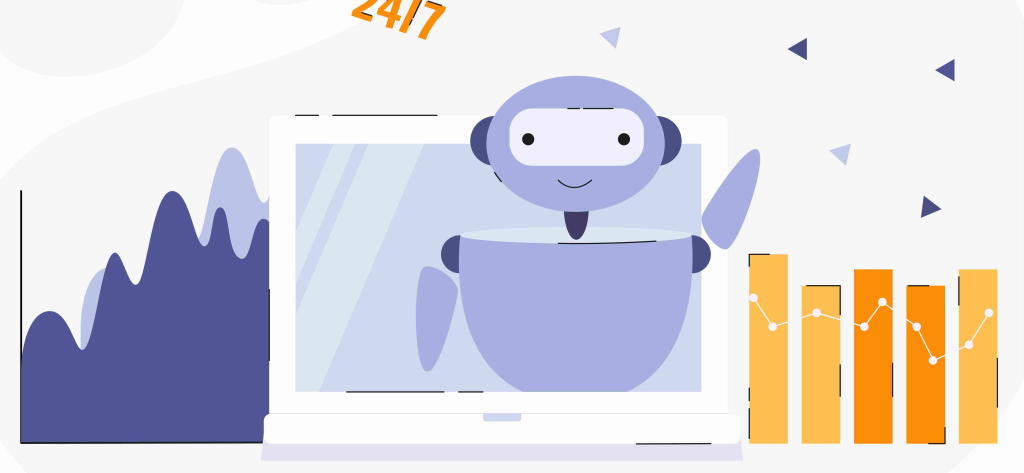As Marketing Manager, I’m constantly monitoring market trends to identify opportunities for growth. The AI chatbot market is undeniably one of the most exciting and rapidly expanding sectors I’ve witnessed in my career. The projected compound annual growth rate (CAGR) of 26.4% from 2024 to 2030 paints a compelling picture of significant expansion and widespread adoption. This article will delve into the key factors driving this growth, examining market size, share, prominent trends, and future projections.

Market Size and Share: A Booming Landscape
The sheer scale of the AI chatbot market is staggering. While various reports offer slightly different figures due to varying methodologies and forecasting periods, the overall trend is undeniable: explosive growth. Some estimates place the market size at over USD 7 billion in 2024, projecting a substantial increase to well over USD 40 billion by 2030. This growth is not uniform across all segments. The retail and e-commerce sector, for example, currently holds a dominant market share, exceeding 32.4% in 2023. This dominance is expected to continue as businesses increasingly leverage chatbots to enhance customer engagement on their primary digital channels. This highlights the crucial role chatbots play in streamlining customer service, improving response times, and driving sales conversions.
Beyond retail and e-commerce, other sectors are rapidly adopting AI chatbot technology. The healthcare industry, for instance, is utilizing chatbots for appointment scheduling, medication reminders, and basic medical advice, improving patient care and reducing administrative burdens. Similarly, the financial services sector is employing chatbots for fraud detection, customer support, and personalized financial advice. The versatility and adaptability of chatbots across numerous industries underpin their market expansion.
AI Chatbot Market Size, Share, Trends | CAGR of 26.4%

Key Trends Shaping the Market
Several key trends are driving the phenomenal growth of the AI chatbot market:
- Advancements in AI and Machine Learning: The continuous improvement in artificial intelligence and machine learning algorithms is a cornerstone of chatbot development. More sophisticated natural language processing (NLP) capabilities allow for more natural and nuanced conversations, enhancing user experience and broadening chatbot applications. The ability to understand context, intent, and emotion within user interactions is a key differentiator, pushing the boundaries of what chatbots can achieve.
- Increased Customer Expectations: Consumers are increasingly demanding instant and personalized service. Chatbots offer a solution, providing 24/7 availability, immediate responses, and tailored interactions. This expectation of immediate support across various platforms is driving businesses to integrate chatbots into their customer service strategies.
- Enhanced Operational Efficiency: For businesses, chatbots represent a significant boost in operational efficiency. They automate routine tasks, freeing up human agents to handle more complex issues. This cost-effectiveness and increased efficiency are major selling points for businesses of all sizes, particularly small and medium-sized enterprises (SMEs) that may lack the resources for extensive customer service teams.
- Growing Demand for Omnichannel Integration: The trend toward seamless omnichannel experiences is fueling the demand for chatbots that can operate across multiple platforms, including websites, mobile apps, messaging platforms, and social media. This integrated approach allows for consistent brand messaging and a unified customer experience, regardless of the channel used.
- Rise of Generative AI Chatbots: The emergence of generative AI chatbots, capable of creating original text and other content, is revolutionizing the chatbot landscape. These advanced bots can provide more comprehensive and personalized responses, fostering deeper engagement and enhancing user satisfaction. This leap forward in AI capabilities is expected to further accelerate market growth.
Regional Variations and Market Segmentation
The global chatbot market is not uniformly distributed. North America, with its advanced technological infrastructure and early adoption of emerging technologies, currently holds a significant market share. However, other regions, particularly Asia-Pacific, are experiencing rapid growth, driven by increasing internet penetration and a burgeoning digital economy. Market segmentation by type (e.g., rule-based, AI-powered), application (e.g., customer service, marketing, internal support), and business size (SMEs vs. large enterprises) further reveals diverse growth patterns. Large enterprises are expected to show particularly strong growth due to their capacity for significant investments in technology upgrades.

Challenges and Future Outlook
Despite the impressive growth trajectory, challenges remain. Concerns about data privacy, security, and the ethical implications of AI continue to be addressed. Ensuring the accuracy and reliability of chatbot responses is also crucial for maintaining user trust. However, ongoing innovation and refinement in AI technology are gradually mitigating these issues.
The future outlook for the AI chatbot market remains exceptionally positive. As AI technology continues to evolve and customer expectations shift, the demand for sophisticated and versatile chatbots will only intensify. The integration of chatbots with other emerging technologies, such as the metaverse and extended reality (XR), is likely to open up even more possibilities, further driving market expansion. My team and I are actively exploring these emerging trends to develop effective marketing strategies that capitalize on the enormous potential of this rapidly evolving market. The AI chatbot market isn’t just growing; it’s transforming how businesses interact with customers and operate internally, and its influence will only continue to expand in the years to come.




